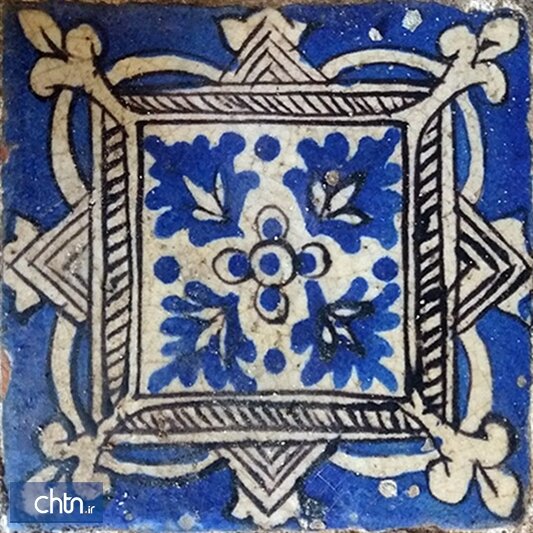Ancient glazed tiles discovered beneath congregational mosque

TEHRAN – A number of ancient glazed tiles have recently been discovered while a team of restorers was digging into the mihrab of a congregational mosque in Rasht, the capital of Gilan province, northern Iran.
Mihrab is a semicircular niche in the wall of a mosque that points out the qibla, the direction of the Kaaba in Mecca and hence the direction that Muslims should face when praying.
“A number of tiled frames have been unearthed in an archeological and restoration project, which is underway in the Safi Mosque of Rasht. The objects were found beneath concrete layers attaching the marble covering of the mihrab of the mosque,” CHTN quoted provincial deputy tourism chief Vali Jahani as saying on Sunday.
These tiled frames consist of square tiles with dimensions of 19 cm by 19 cm, which are engraved on the white background with hand-made methods, Islamic motifs and themes of flowers and plants with turquoise glaze, and they bear a turquoise ribbon on the side covering the tile frame, he explained.
Talking about the discovery, the official noted “During the restoration studies on Safi Mosque, which is aimed to realize the evolutionary process of its structure and to shed new light on additional sections to the original structure.”
“Earlier in the month of Farvardin (Mach 20 – April 19) a trench measuring 1.5 m by 1.5 m was carved in the mosque’s shabestan, which resulted in recognizing some additional sections.”
A shabestan is an underground space that can be usually found in the traditional architecture of mosques, houses, and schools in ancient Iran.
The official also referred to the history of the mosque, saying “Safi Mosque, also known as Sefid and Shahidiyeh Mosque, was established before Shah Ismail, the Safavid monarch, assumed power (in 1501). The mosque is
“The mosque is the oldest standing monuments in Rasht. Archaeological evidence such as pottery pieces, interior ornamentations, and tiles suggest that the mosque was operational in time between 8th to 10th centuries AH. It shows that the first part of the mosque was built during the Ilkhanid period.”
Elsewhere in his remarks, the official noted that the restoration plan is aimed to eliminate contemporary parts attached to the mosque, adding that its interior decoration will be restored based on archaeological data of the original form of the mosque.
“It is possible that more extensive archeological excavations to be carried out in the southern parts of the mosque’s Shabestan the restoration plan comes to an end.”
Generally, a mosque differs from a church in many respects. Ceremonies and services connected with marriages and births are not usually performed in mosques, and the rites that are an important and integral function of many churches, such as confession, penitence, and confirmation, do not exist there. Prayer is performed by bows and prostrations, with no chairs or seats of any kind. Men stand in rows, barefooted, behind the imam and follow his movements.
Rich and poor, prominent and ordinary people, all stand and bow together in the same rows. Women may participate in the prayers, but they must occupy a separate space or chamber in the mosque. No statues, ritual objects, or pictures are used in mosques; the only decorations permitted are inscriptions of Quranic verses and the names of the Prophet Muhammad (PBUH) and his companions.
AFM/MG
Leave a Comment